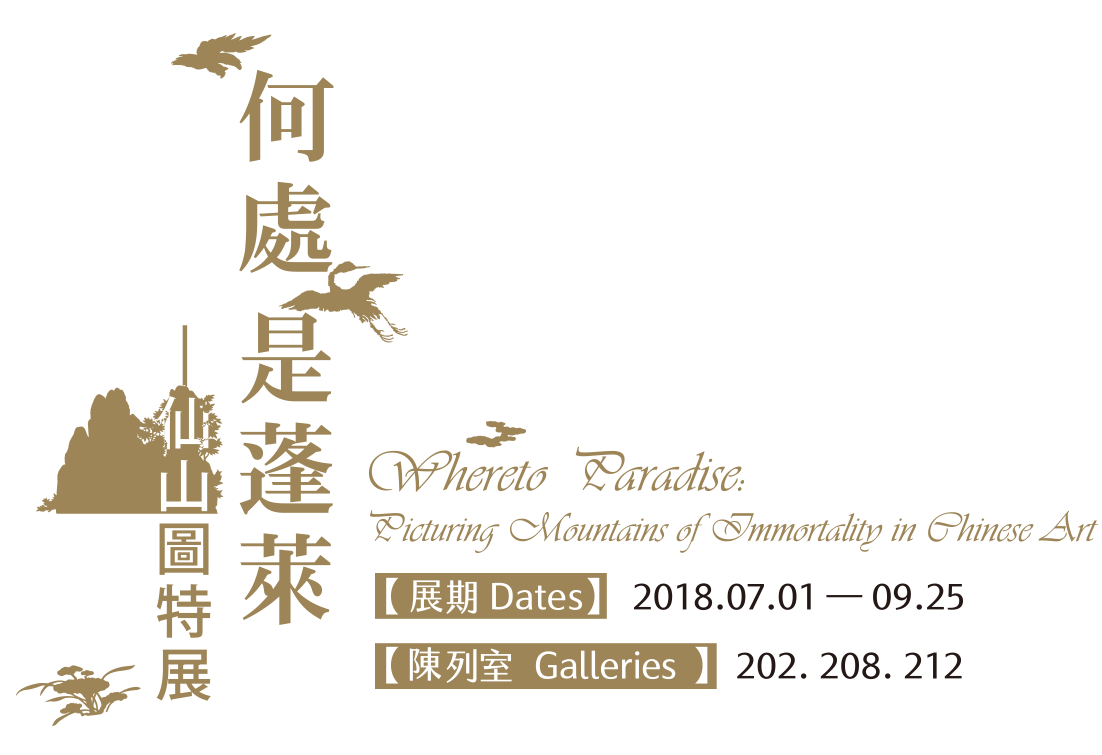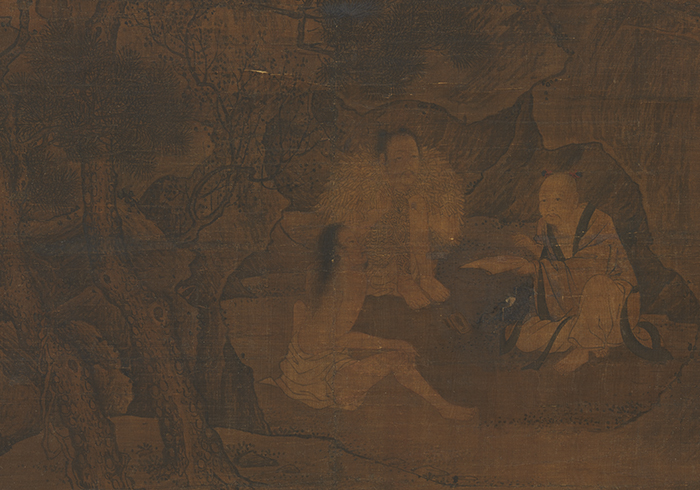Entering the mountains and practicing the Dao became a way in which mortals could attain the sacred. Mountain forests rich in herbal medicines and metallic minerals provided people who went there in search of immorality with vast resources for making concoctions and elixirs to achieve this goal. Famous mountains were also said to be where sacred objects were held, and Daoist adepts, if they had the opportunity, could even encounter immortals and receive secrets and heavenly texts from them.
Receiving the Text from Immortals
- Attributed to Yan Wengui (fl. 11th c.), Song dynasty
- Album leaf, ink and light colors on silk, 46.3 x 41.3 cm
This painting bears neither seal nor signature, but the traditional title label gives the artist as Yan Wengui, who served as an Attendant in the Painting Academy under the Song emperor Taizong (r. 976-997) and specialized in landscape subjects. The style of this work, however, dates to the Southern Song period approximately in the thirteenth century.
Three figures sit barefooted on the ground in a grotto by pine trees. The man holding a scroll on the right with a moustache has his head shaved except for two child bonnets, his skin supple like that of a youth. The solemn figure in the middle wears of tree leaves and holds a brush, a inkstone placed on the ground next to him. The left figure with long hair and his upper body unclothed also has a solemn expression. The painting expresses the idea of grotto-heavens, whereby Daoist adepts under special circumstances are able to enter grottoes and receive the Dao and secret texts. The person on the right is probably a Daoist who has met with immortals who are passing along to him the secret heavenly text of becoming an immortal.

